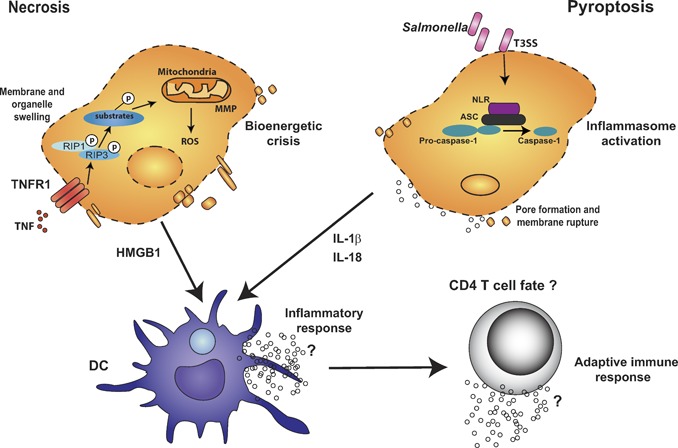Figure 4.

Although uptake of apoptotic cells carrying TLR ligands by phagocytes instructs Th17 differentiation, the consequence of innate recognition of other modes of cell death is yet to be defined. Phagocytosis of infected apoptotic cells by DCs induces IL‐6, TGF‐β, and IL‐23 production, a unique cytokine profile that triggers Th17 differentiation. Other types of cell death, such as necrosis and pyroptosis, also exist. Although caspase‐1 activation is typical of pyroptosis, the RIP1 and RIP3 kinases mediate death receptor‐mediated necrosis such as that downstream of TNFR1. Activation of the kinase activities of RIP1 and RIP3 targets key enzymes in bioenergetic pathways mediating glycogen breakdown, glutaminolysis, and ROS production. Caspase‐1 activation is controlled by the assembly of an inflammasome complex consisting of NLRs and the adaptor protein ASC. Activated caspase‐1 in turn mediates the processing of pro‐IL‐1β to IL‐1β. Cells undergoing pyroptosis thus release cellular contents and inflammatory cytokines such as IL‐1β, which can then activate DCs. Similarly, necrotic cells also release intracellular contents and have most typically been associated with the release of HMGB1, which can cause DC maturation. The consequence of phagocytosis of necrotic and pyroptotic cells on CD4 T cell differentiation is not yet known.
